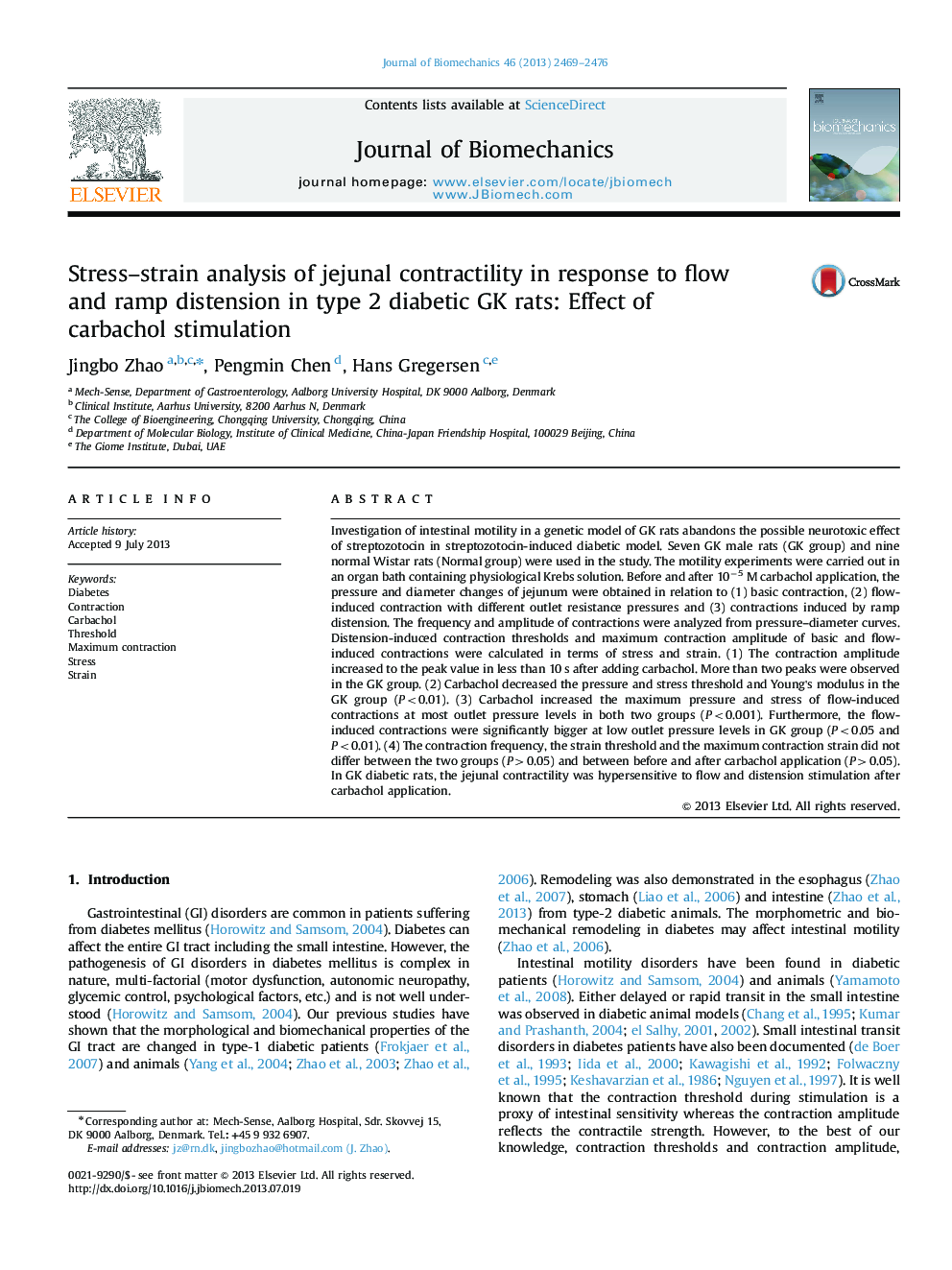| Article ID | Journal | Published Year | Pages | File Type |
|---|---|---|---|---|
| 10432491 | Journal of Biomechanics | 2013 | 8 Pages |
Abstract
Investigation of intestinal motility in a genetic model of GK rats abandons the possible neurotoxic effect of streptozotocin in streptozotocin-induced diabetic model. Seven GK male rats (GK group) and nine normal Wistar rats (Normal group) were used in the study. The motility experiments were carried out in an organ bath containing physiological Krebs solution. Before and after 10â5Â M carbachol application, the pressure and diameter changes of jejunum were obtained in relation to (1) basic contraction, (2) flow-induced contraction with different outlet resistance pressures and (3) contractions induced by ramp distension. The frequency and amplitude of contractions were analyzed from pressure-diameter curves. Distension-induced contraction thresholds and maximum contraction amplitude of basic and flow-induced contractions were calculated in terms of stress and strain. (1) The contraction amplitude increased to the peak value in less than 10Â s after adding carbachol. More than two peaks were observed in the GK group. (2) Carbachol decreased the pressure and stress threshold and Young's modulus in the GK group (P<0.01). (3) Carbachol increased the maximum pressure and stress of flow-induced contractions at most outlet pressure levels in both two groups (P<0.001). Furthermore, the flow-induced contractions were significantly bigger at low outlet pressure levels in GK group (P<0.05 and P<0.01). (4) The contraction frequency, the strain threshold and the maximum contraction strain did not differ between the two groups (P>0.05) and between before and after carbachol application (P>0.05). In GK diabetic rats, the jejunal contractility was hypersensitive to flow and distension stimulation after carbachol application.
Related Topics
Physical Sciences and Engineering
Engineering
Biomedical Engineering
Authors
Jingbo Zhao, Pengmin Chen, Hans Gregersen,
